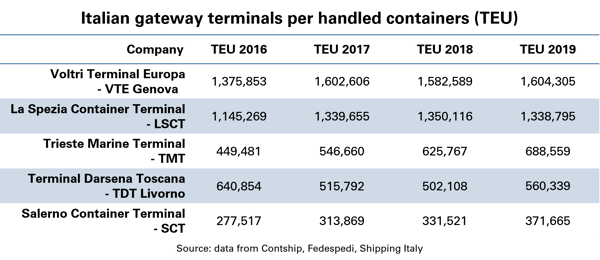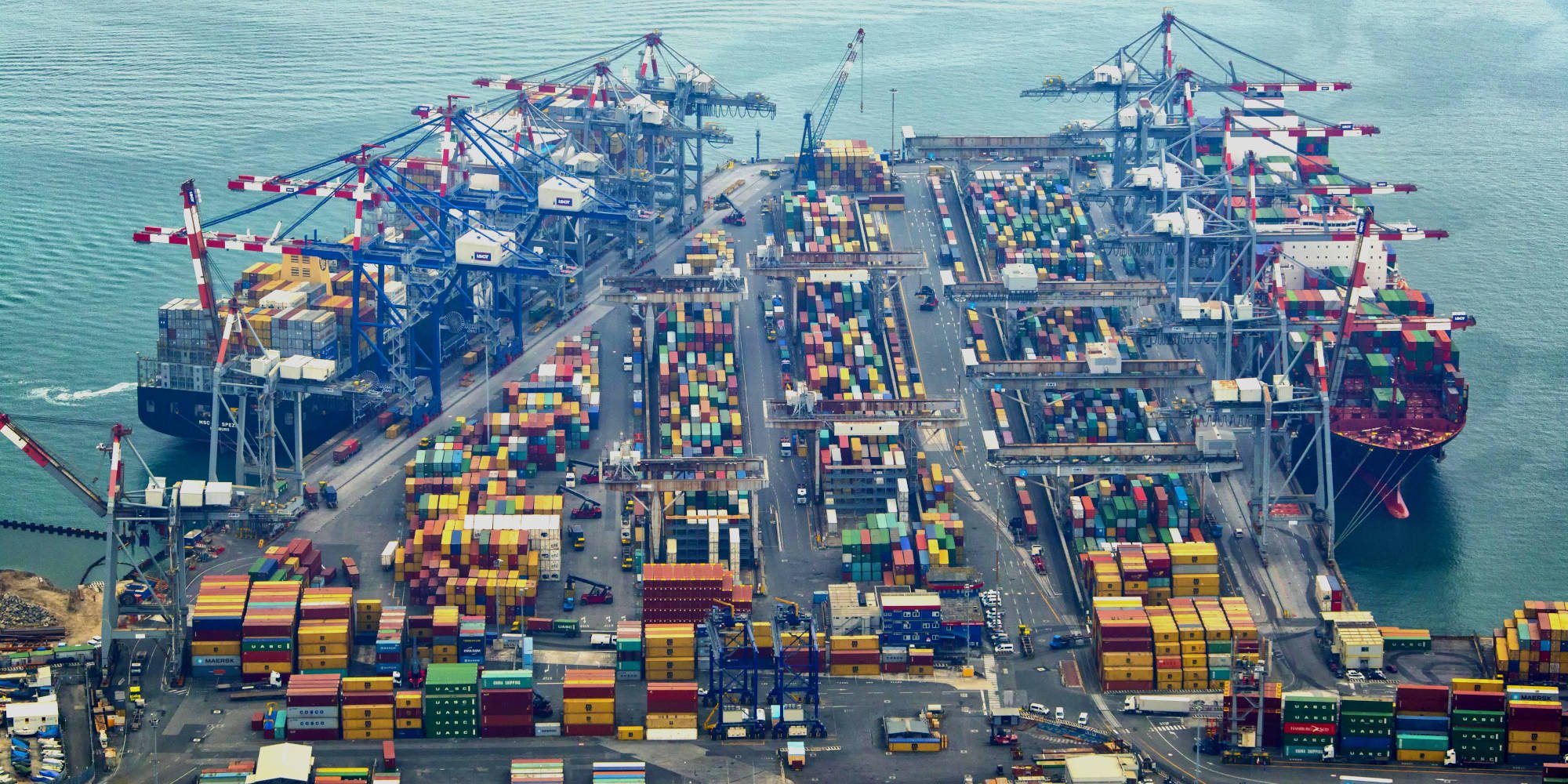Container terminals are logistics platforms where unitized cargo - such as containers, swap bodies and ISO tanks - are handled, stored and transferred from one transport modality to another. The standardization of containers allows goods to be handled quickly, safely and efficiently, using gantry cranes, forklifts and reach stackers, to transfer cargo between different transport modalities, reducing transfer time and cost.
Container terminals can be located inside a port (maritime container terminals) or inland (intermodal terminals, also called dry ports). The main activity of a container terminal is the transfer of cargo units from one transport modality to another; auxiliary activities include the temporary storage of containers and value added services, such as cargo units maintenance and repair, and sometimes cargo consolidation and deconsolidation activities, performed in dedicated areas known as Container Freight Stations.

Size, connectivity and equipment
The scale of a container terminal’s operations is measured according to the TEUs handled in a certain amount of time (year, month, day) and is determined by:
-
The size of the yard, which affects the number of containers that the terminal can simultaneously host
-
Maritime, rail and road connectivity, which are determined by the number of sea and rail services which connect the terminal to the logistics network, and the number of trucks which will be able to access the terminal to provide the first and last mile truck haulage service
-
Equipment: forklifts, reach stackers, gantry cranes (and, for maritime terminals, ship-to-shore cranes) which can be used to load and unload containers onto ships, trains and trucks and to reposition the units within the terminal area.
Auxiliary services
Container terminals represent the intermediate nodes of global supply chains, connecting production and consumption centers. For this reason, within their premises it is often possible to find auxiliary services, such as container maintenance and repair or customs operations management. Customs operations performed inside a container terminal involve documental and physical inspections, implemented by customs agencies on imported goods.

These control activities have been traditionally performed at maritime terminals which operate as gateways for overseas imports. Today, thanks to the implementation of innovations such as Railway Fast Corridors, customs inspections can be sometimes moved to inland intermodal terminals.
In this way, the containers can be transferred by rail from the shipping landing terminal to a dry port, without issuing the T1 transit document and postponing customs clearance operations. This allows to avoid bottlenecks at the port of landing, significantly reducing transit times.
Which are the main maritime terminals in Italy?
In the following list we mention the main Italian gateway terminals, ordered by TEUs handled per year. We did not include in the list those container terminals with operations focused mostly on transhipment (the transfer of containers between ships).

Which are the main intermodal terminals in Italy?
In this list we inserted the main Italian intermodal terminals, ordered by the number of weekly inbound and outbound rail connections (both national and international). The list features data provided by the observatory “Il trasporto ferroviario in Italia: una analisi dei collegamenti ferroviari di trasporto combinato”, published by Ingegneria Ferroviaria.
The following table shows national and international connections, both inbound and outbound, within the main Italian container terminals. The total amount is made up of connections operated by both “traditional MTOs” and “non-traditional MTOs”. While “traditional MTOs” include companies which have operated in the multimodal transport sector for a longer time, “non-traditional MTOs” include companies which have recently entered this business.
|
National and international rail connections, inbound and outbound |
||||
|
“traditional” MTOs |
“non trad.” MTOs |
|||
|
Terminal |
Prov |
2015 |
2017 |
TOTAL |
|
Busto Arsizio-Gallarate |
VA |
361 |
0 |
361 |
|
Novara CIM + Boschetto |
NO |
155 |
54 |
209 |
|
Milan / Melzo |
MI |
16 |
166 |
182 |
|
Verona Quadrante Europa |
VR |
145 |
16 |
161 |
|
Padua Interporto |
PD |
88 |
62 |
150 |




